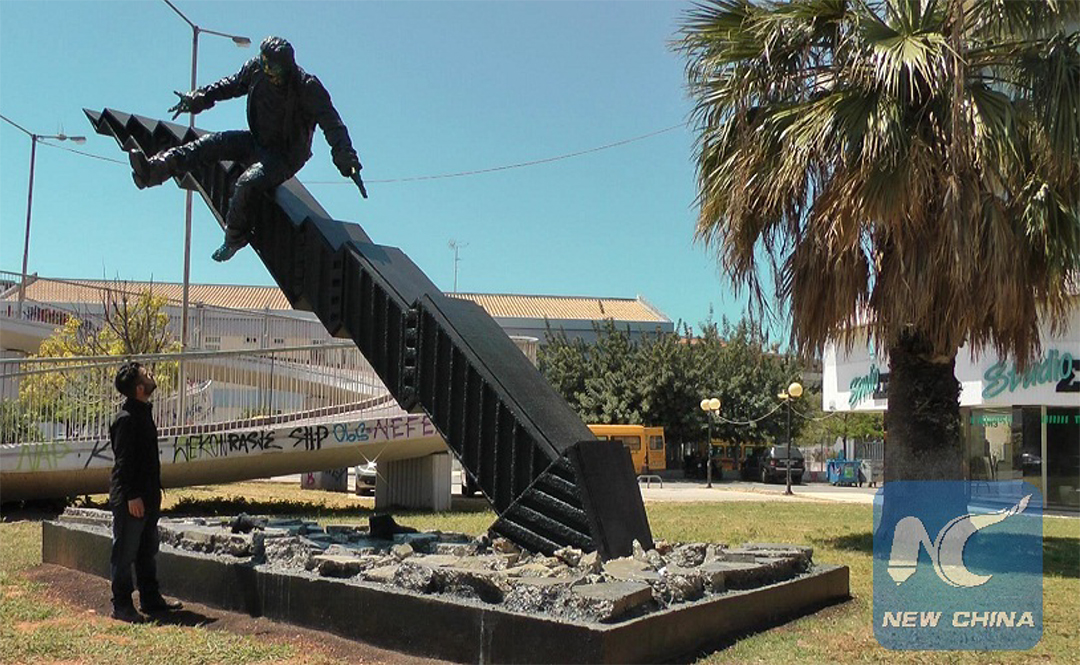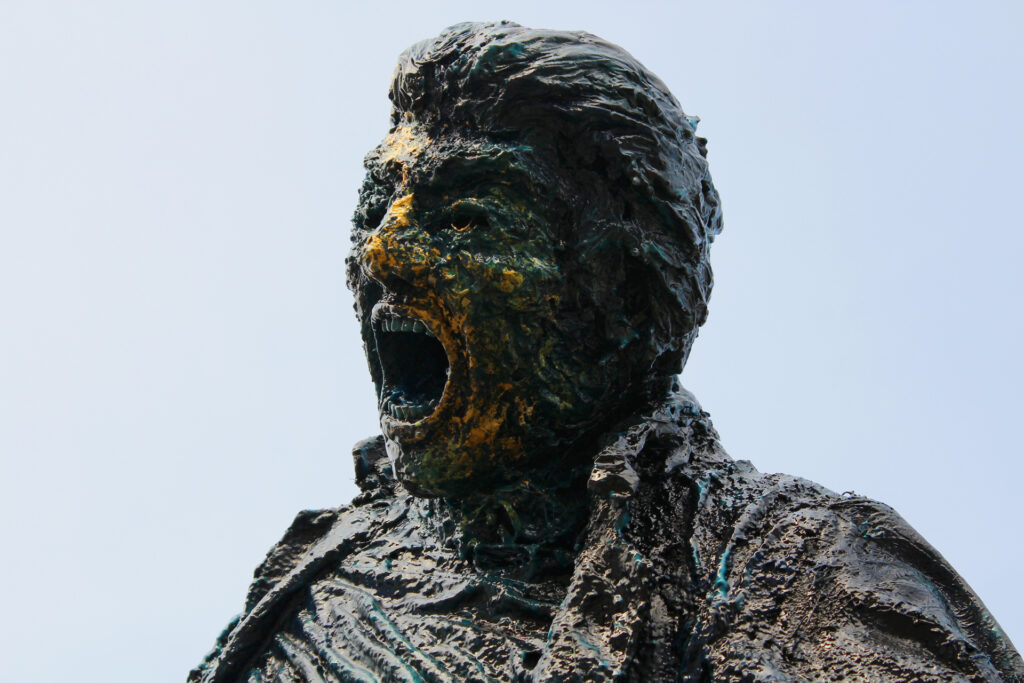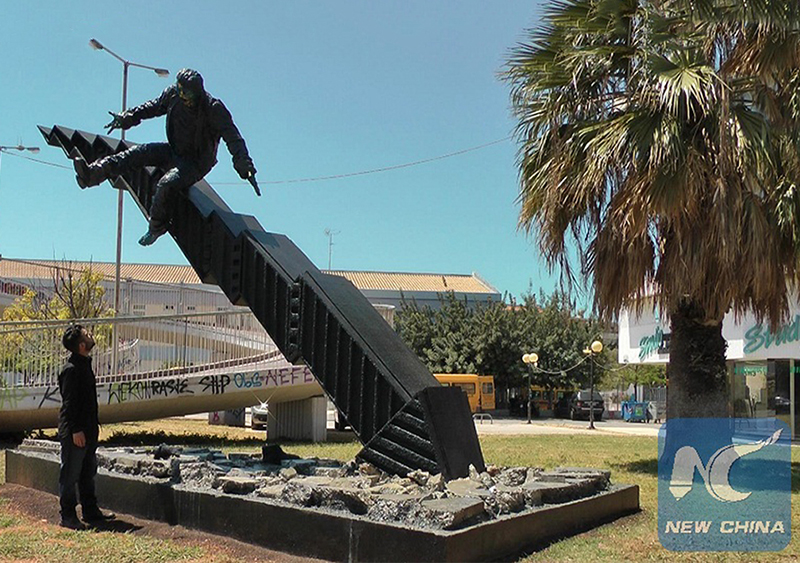Young Greek Creates Sculpture to Reflect Debt Crisis

Young Greek Creates Sculpture to Reflect Debt Crisis
Athanasia Batziou | Sunday, May 31, 2015
ATHENS, Greece (Xinhua) – While negotiations between Greece and its creditors are at a critical point, with the country warning it is running out of cash by the end of the month, a new public sculpture in Athens highlights the devastating effect of the crisis on the Greek society and the people.
Situated next to Vouliagmenis Avenue, a few kilometers from the center of Athens, the impressive sculpture titled ‘Crisis‘ — about seven meters long and four meters high — is a giant stock exchange index that crushes on the ground, broken into pieces. On the top of it, a man is about to fall as the index collapses.
“This work started as a result of the economic and social conditions that we are experiencing in Greece, but also abroad, and my attempt was to give the opportunity for social expression through art,” Tasos Nyfadopoulos, the 22-year-old self-taught artist, told Xinhua.
He explained that the sculpture can be interpreted in two main ways – negative and positive. “The first interpretation is related to suicides. It constitutes a tribute to the people who committed suicide because of the crisis, and to their families who carried this burden,” Nyfadopoulos explained. Suicides in Greece rose 35 per cent since the beginning of the crisis in 2010, a joint Greek-British study published in the British Medical Journal revealed. This is a staggering increase, considering that before the crisis Greece was one of the countries with the lowest suicide rates in Europe.
“The second interpretation of the sculpture is that the man who is on the index can, amidst all the difficulties that surround and affect him, come out as a new man, and can be led to a ‘catharsis‘,” Nyfadopoulos added.

The sculpture has attracted interest and positive reactions from many people, Nyfadopoulos said. “It is very important that society itself understands that narrating a negative experience can lead to healing,” he added.
The sculpture is made of modern materials such as carbon fiber, diolen, kevlar, and steel, the cost of which was covered by various sponsors that Nyfadopoulos and his friends sought. After working for 18 months on the sculpture, he donated the finished piece to the Municipality of Argyroupoli-Elliniko, a southern suburb of Athens, which agreed to host it.
“In almost every home there is an unemployed person,” Giannis Konstantatos, mayor of Argyroupoli-Elliniko, told Xinhua, adding that the local administration has taken measures to relieve those affected the most by the crisis. “For the last three years we have the Community Store of the municipality which delivers food to 300 families, the community medical care unit that provides medicines to the poor and those without social security who, I think, are about 7,000 every month, and many other welfare actions that the municipality offers, like the food bank which offers food to 500 families,” Konstantatos said.
At 22, Nyfadopoulos belongs to what is referred to as the “lost generation” in Greece, where unemployment runs as high as 49 per cent, according to Eurostat, the statistical office of the European Union. “Indeed, it looks like a generation without hope is created, but the issue is how each one of us in his/her field will manage to inspire something different, and a change of course,” Nyfadopoulos observed.
